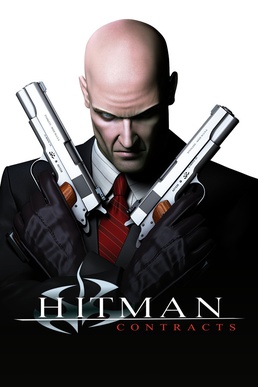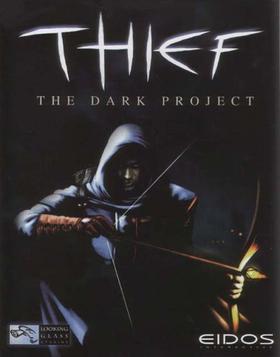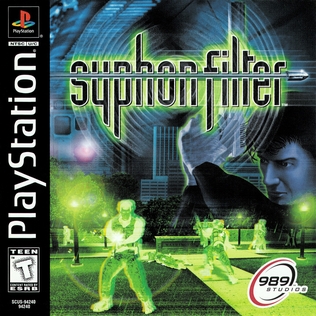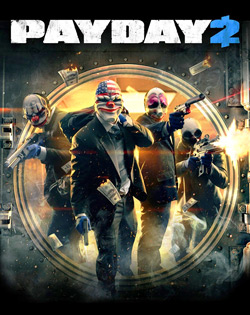A stealth game is a type of video game in which the player primarily uses stealth to avoid or overcome opponents. Games in the genre typically allow the player to remain undetected by hiding, sneaking, or using disguises. Some games allow the player to choose between a stealthy approach or directly attacking antagonists, but rewarding the player for greater use of stealth. The genre has employed espionage, counter-terrorism, and rogue themes, with protagonists that are special forces operatives, special agents, secret agents, thieves, ninjas, or assassins. Some games have also combined stealth elements with other genres, such as first-person shooters and also platformers.
Tom Clancy's Splinter Cell is a series of stealth action-adventure video games, the first of which was released in 2002, and their tie-in novels that were endorsed by Tom Clancy. The series follows Sam Fisher, a highly trained agent of a fictional black-ops sub-division within the NSA, dubbed "Third Echelon", as he overcomes his adversaries. Levels are created using Unreal Engine and emphasize light and darkness as gameplay elements. The series has been positively received, and was once considered to be one of Ubisoft's flagship franchises. The series had sold 19 million units by 2008. No further installments have been released since 2013. A remake of the first game was announced in December 2021.

Castle Wolfenstein is a 1981 action-adventure game that was developed by Muse Software for the Apple II home computer. It is one of the earliest games to be based on stealth mechanics. An Atari 8-bit family port was released in 1982 and was followed by versions for Commodore 64 (1983) and MS-DOS (1984).
Hitman is a stealth video game franchise created by IO Interactive. In each installment, players assume the role of a cloned contract killer named Agent 47, who travels around the world to assassinate various targets that are assigned to him by the fictional International Contract Agency (ICA). Gameplay focuses on freedom of approach, with most levels placing the player in a large sandbox location where they have free rein to explore and find different ways to reach and eliminate their targets. Stealth is a major component of the gameplay and players are given various tools to accomplish their objectives, such as suppressed weaponry and the ability to take disguises, which allow 47 to blend in with non-player characters (NPCs) and bypass most restricted areas undetected.

Hitman: Contracts is a 2004 stealth video game developed by IO Interactive and published by Eidos Interactive for Microsoft Windows, PlayStation 2 and Xbox. It is the third installment in the Hitman video game series, and serves as both a remake of Hitman: Codename 47 and sequel to Hitman 2: Silent Assassin, incorporating gameplay elements introduced in the latter into missions from the first game, which have been remastered with enhanced graphics. The game also includes several new missions, which serve as flashbacks experienced by the player character, the cloned assassin Agent 47, after being almost killed on a botched job.

Hitman: Codename 47 is a stealth video game developed by IO Interactive and published by Eidos Interactive for Microsoft Windows in November 2000. In the game, players control Agent 47, a genetically enhanced human clone who is rigorously trained in methods of murder. Upon escaping from his testing facility, 47 is hired by the International Contract Agency (ICA), a global contract killing organization. His missions take him to locations in Asia, Europe, and South America to assassinate wealthy and decadent criminals, who at first seem to share no connections with each other, but are soon revealed to have all played a role in a larger conspiracy. The gameplay revolves around finding ways to stealthily reach and eliminate each target; to this end, players can make use of various tools, including disguises and suppressed weaponry. However, some levels are more action-focused and do not feature stealth as a possibility, instead playing like a traditional third-person shooter.

Second Sight is a 2004 science fiction action-adventure stealth video game developed by Free Radical Design and published by Codemasters for GameCube, PlayStation 2, Xbox and Microsoft Windows. Players assume control of an American parapsychology researcher, who awakens in a medical facility with no memory of their past and powerful psychic abilities, and breaks out with these powers in order to uncover their past and their involvement in a mission they undertook with a specialist taskforce of the U.S. Marines. The game's action is divided between gun combat and stealth, with emphasis on players making use of different psychic abilities to survive against hostile opponents and overcoming obstacles and tricky puzzles.

Sly 2: Band of Thieves is a platform stealth video game developed by Sucker Punch Productions and published by Sony Computer Entertainment. It was released in 2004 for PlayStation 2. It is the sequel to the game Sly Cooper and the Thievius Raccoonus and part of the Sly Cooper video game series. The game received critical acclaim and is often considered to be one of the greatest PlayStation 2 games of all time.

Thief: The Dark Project is a 1998 first-person stealth video game developed by Looking Glass Studios and published by Eidos Interactive. Set in a fantasy metropolis called the City, players take on the role of Garrett, a master thief trained by a secret society who, while carrying out a series of robberies, becomes embroiled in a complex plot that ultimately sees him attempting to prevent a great power from unleashing chaos on the world.

Bonanza Bros. is a 3D-style, 2D side-scrolling stealth action game developed and released by Sega in 1990. It is one of the earliest arcade games powered by the Sega System 24 arcade system board. It was ported to various home systems, including the Mega Drive/Genesis, Master System, PC-Engine/TurboGrafx-CD, and several home computers.

Shinobido: Way of the Ninja is a stealth video game developed by Acquire and released for the PlayStation 2 in 2005.

Perfect Dark is a 2000 action game developed and published by Rare for the Game Boy Color. As a direct prequel to its Nintendo 64 counterpart, the game follows agent Joanna Dark as she completes her training at the Carrington Institute research centre and uncovers information against rival corporation dataDyne. The gameplay revolves around shooting opponents and completing objectives such as rescuing hostages or recovering items. The game also includes a multiplayer mode where two players may compete against each other in several deathmatch modes.

Syphon Filter is a third-person shooter video game developed by Eidetic and published by 989 Studios for PlayStation. It is the first installment in the Syphon Filter franchise. The plot centers on special agents Gabriel "Gabe" Logan and Lian Xing who are tasked by the United States government to apprehend a German international terrorist.

Thief is a stealth video game developed by Eidos-Montréal and published by Square Enix in February 2014 for PlayStation 3, PlayStation 4, Windows, Xbox 360, and Xbox One video gaming platforms. Feral Interactive brought the game to OS X in November 2015. It is a revival of the cult classic Thief video game series of which it is the fourth installment. Initially announced in 2009 as Thief 4, it was later announced in 2013 that the game is a reboot for the series.

Sniper: Ghost Warrior is a tactical shooter video game developed and published by City Interactive for Microsoft Windows, Xbox 360 and PlayStation 3. It is the second entry in the Sniper: Ghost Warrior series and is the sequel to Sniper: Art of Victory.

Payday 2 is a cooperative first-person shooter video game developed by Overkill Software and published by 505 Games. The game is a sequel to 2011's Payday: The Heist. It was released in August 2013 for Windows, PlayStation 3 and Xbox 360. A remastered version of the game, subtitled Crimewave Edition, was released for PlayStation 4 and Xbox One in June 2015 and for the Nintendo Switch in February 2018.

Tiny Thief was a 2013 point-and-click adventure video game developed by 5Ants and published by Rovio Entertainment through its Rovio Stars program. The player controls a thief who goes on a quest to steal items from enemies. Players can interact with objects to progress through each level and achieve the targeted item. Enemies are present throughout, and players must avoid getting caught by utilizing the game's stealth mechanics. The game implements a three-star performance system, with each of the star corresponding to goals completed.
Volume is an indie stealth video game developed by Mike Bithell Games. It was released for Microsoft Windows, OS X, and PlayStation 4 in August 2015, and the PlayStation Vita in January 2016. The game uses stealth mechanics inspired by Metal Gear Solid series, allowing the player to plan courses of action to work through levels without being detected by guards, dogs, and automated security turrets to reach specific objectives. In addition to the game's levels, Volume supports user-made levels that can be shared with others. The game presents a modern take on the Robin Hood legend, where a young thief discovers a plot for a military coup involving various heists, and uses a device called "Volume", with the assistance of its artificial intelligence to perform these heists in a virtual manner and broadcasting them to the world at large to make the coup known. The story is presented with the help of voice actors Charlie McDonnell, Danny Wallace, Dan Bull, James Stephanie Sterling, and Andy Serkis.

Sniper Elite III is a 2014 third-person tactical shooter stealth video game developed and published by Rebellion Developments. The game is a prequel to its 2012 predecessor Sniper Elite V2, and is the third installment in the Sniper Elite series. A direct sequel, Sniper Elite 4, was released in 2017.

Monaco: What's Yours Is Mine is a 2013 stealth video game developed by Pocketwatch Games in which players, alone or cooperatively, perform heists and robberies. Players choose from eight characters, each of whom has a unique and beneficial skill, such as the ability to change appearance or tunnel through walls. Monaco's single-player story is told in four acts from perspectives of different characters. The cooperative mode lets up to four players play together in different locations.
















